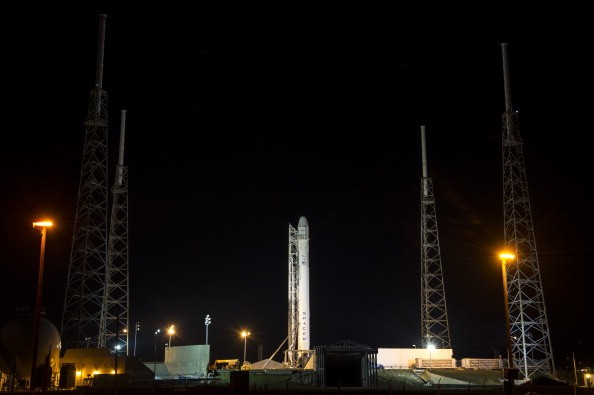SpaceX is back to successful launch of resupply mission to the International Space Station on its first cargo mission following the explosion of the seventh mission in June. The company's Falcon 9 rocket was launched to the space station on the afternoon of April 8, Friday, carrying with it the Dragon cargo spacecraft filled with almost 7,000 pounds of supplies.
As the Falcon 9 rocket took off, it flew up and separated. The second stage went into orbit with the Dragon cargo while the first stage turned around, returned to Earth and landed vertically on a robotic floating barge off the coast of Florida, said the science editor from NPR who witnessed the launch. Landing on the sea and the rocket's vertical landing are big deals for SpaceX as they lead to reusable rockets.
The first stage of the rocket is the bigger part that carries fuel, engines, avionics and other complicated bits. It usually just fell into the ocean and wasted. SpaceX has been finding ways to reuse it and cut space travel cost.
SpaceX has a contract with NASA for periodic resupply missions to ISS through 2024. It has sent supplies to ISS six times, but its seventh attempt failed in June 2015 when a Falcon 9 rocket disintegrated on its way to orbit.
The company stalled rocket launch for six months to investigate the accident and found the explosion was caused by a flaw in the strut of one of the upper fuel tanks. The firm made a flight again in December following an update of its rocket and strut systems, said its VP of Mission Assurance Hans Koenigsmann.
The Dragon is set to dock on the early morning of Sunday. Over 3,000 pounds of the cargo is the Bigelow Expandable Activity Module, or BEAM, an expandable habitat that will give astronauts 565 cubic feet to move around. The BEAM will be attached to the ISS' Tranquility node, will be inflated in the next four months and will stay there for two years to help engineers collect data on how it holds up in space, The Verge reported.
Also, in the cargo are other science experiments, such as the cabbage crop, 20 live mice and a student-made experiment that will test a procedure to find any DNA damage that might be developed by the space station's crew. The cabbage will be grown and eventually eaten by the crew members while the live mice are for Eli Lilly, a pharmaceutical firm that helps researchers understand muscle atrophy better, as muscle tissues waste away faster in space.
The Dragon will stay berthed to the space station for about 30 days before its return to Earth on May 11. It will carry important cargo back to Earth, including body fluid samples took by astronaut Scott Kelly during his almost yearlong stay in ISS. Kelly spent 340 days in the space station so that scientists will know how the body reacts to microgravity. The samples he took will tell how Kelly's body adapted to space.
In the following video, CNN covered the SpaceX' successful rocket launch and vertical landing of a portion of Falcon 9.



























